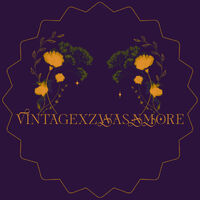Antique Aelteste Volkstedter Figurine
In the era of the 1700s, a German porcelain factory emerged, known as Volkstedt, a name that resonates with significance in the realm of porcelain figurines even in our present day. This remarkable establishment played a crucial role in solidifying Germany's position in the annals of porcelain artwork, while simultaneously propelling Europe's ascent onto the grand stage of porcelain mastery.
Now, let us turn our attention to a captivating embodiment of history and grace – a Victorian lady gracefully poised amidst a tapestry of blooming flowers, her delicate hand adorned with a dainty pink handkerchief. This exquisite figure not only showcases the artistry of German craftsmanship but also epitomizes the essence of Art Nouveau, the prevailing aesthetic of the illustrious Belle Epoque era. It seamlessly captures the spirit of porcelain artistry, intertwining seamlessly with the realm of home decor and architecture.
This alluring figurine would undoubtedly enhance any mantel or side table, blending with a variety of contemporary decor styles. Whether adorning a country cottage, a modern abode, or a traditional setting, she effortlessly harmonizes with her surroundings, adding a touch of timeless elegance.
The Volkstedt Porcelain Factory, nestled in the picturesque region of Rudolstadt, Thuringia, Germany, holds the distinction of being the earliest porcelain manufactory in the Thuringia region. Its origins can be traced back to an event on the 8th of September 1760 when the skilled porcelain maker, Georg Heinrich Macheleid, made an official request. This request caught the attention of the esteemed Johann Friederich, Furst von Schwarzburg-Rudolstadt, a true patron of the arts and music, who granted the privilege for the establishment of the manufactory.
Under the personal direction of Johann Friederich, the Volkstedt Porcelain Factory was established near his princely court of Schwarzburg-Rudolstadt in 1762. This auspicious beginning marked the birth of a legacy that would endure through the ages.
Volkstedt swiftly gained renown for its meticulously painted and finely crafted porcelain figures, capturing the hearts of collectors and connoisseurs alike. These exquisite pieces became cherished treasures, embodying the pinnacle of artistic expression through porcelain.
Now, let us return our focus to the enchanting Victorian lady figurine. She arrives in a state of remarkable preservation, her porcelain form devoid of any cracks that may mar her delicate beauty. However, upon closer inspection, one may notice a small chip on a leaf at the bottom and some minuscule marks. These imperfections are only discernible to those who hold her in their hands and examine her with care.
In her presence, one cannot help but be transported to a bygone era, where elegance and refinement reigned supreme. She serves as a testament to the mastery of the artisans at Volkstedt, who painstakingly brought her to life with their skilled hands and unwavering attention to detail.
As we marvel at this captivating figure, we are reminded of the enduring legacy of Volkstedt and its significant contribution to the world of porcelain art. It is a legacy that continues to captivate collectors and enthusiasts, transcending time and bridging the gap between past and present.
Owning this Victorian lady figurine is not merely acquiring a decorative piece but embracing a piece of history, a tangible link to the rich artistic heritage of Germany and the Belle Epoque period. She stands as a symbol of the beauty and craftsmanship that defined an era, and her presence in any home or space is sure to evoke a sense of nostalgia and appreciation for the artistry of yesteryears.
In the grand tapestry of porcelain figurines.

